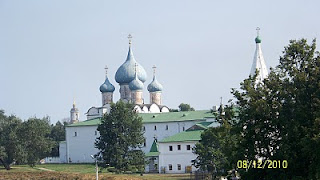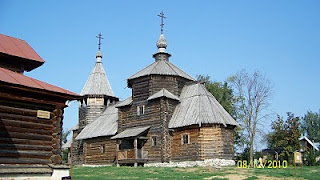

 We returned home thee days ago. Our Internet connection in St. Petersburg was slow, and our days were full, so I will add a few more posts about the trip now.
We returned home thee days ago. Our Internet connection in St. Petersburg was slow, and our days were full, so I will add a few more posts about the trip now.
 What I have learned about religion in Russia is fascinating. I certainly am no expert on the Russian Orthodox Church, but I have learned a bit.
What I have learned about religion in Russia is fascinating. I certainly am no expert on the Russian Orthodox Church, but I have learned a bit.Prior to the Revolution , churches were abundant and had many meanings for Russians. Merchants built churches as expressions of thanksgiving for their success. Many churches were built as tributes to fallen heroes. Churches served as community centers. In smaller communities, they were often used to safeguard merchants wares. Some towns, such as Suzdal, were religious centers. In the 19th Century there were 40 churches here, with only about 400 families! Often there were summer churches, which were large, lofty and unheated, and winter churches, which were much smaller, and had some heat source in them. The two white churches pictured above are in Suzdal.
After the revolution, religion was virtually banned in the Soviet Union. Churches, monasteries and convents were nationalized, and used as storage buildings, artists studios, concert halls, and other such activities. Convents and monasteries were often turned into prisons, for political prisoners. Many icons were removed to museums, others were sold to other countries to raise money for the Soviet government. There was some loosing of the restrictions during World War II, but they returned after the war.
With the collapse of the Soviet Union, there has been a significant return to religious practice. A great deal of money has been spent to restore churches throughout Russian. Many are restored as museums, to support the growing tourist industry. Every town we visited had churches as part of the planned tour. But there are a significant number of churches that hold services again.

The interiors of Russian Orthodox Churches are covered with frescoes, paintings and icons. Rarely is there a bare space. The wealthier churches are full of gilded or gold surfaces. There are no pews or chairs, as sitting during the service is not allowed. The onion dome represents a flame. As you see by the picture of the wooden church, not all churches have the domes.
I do not know what percentage of the Russian population claim religious affiliation, but clearly the churches are a very important part of their heritage. They are also beautiful buildings to visit.
No comments:
Post a Comment